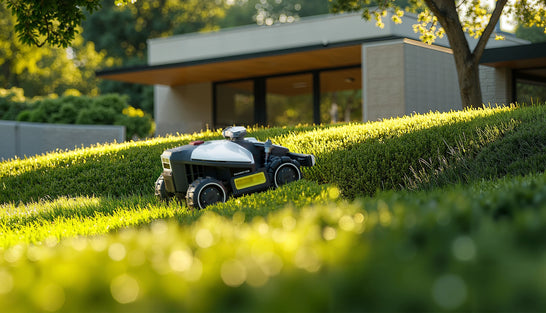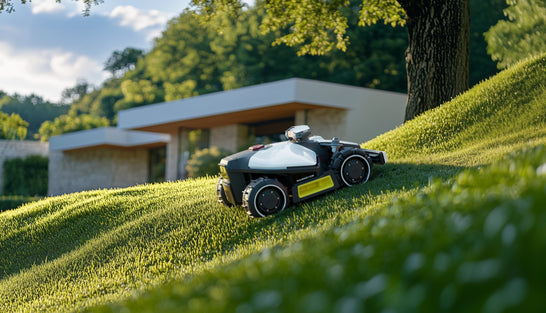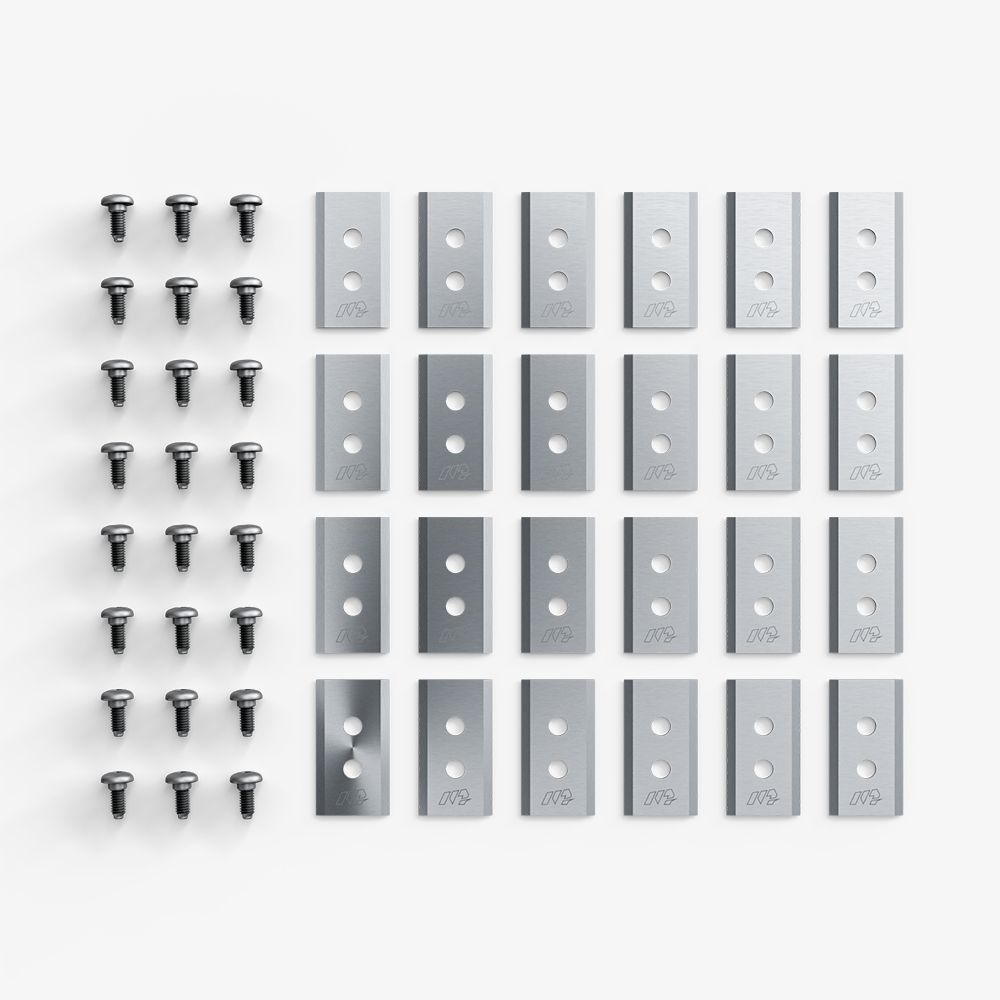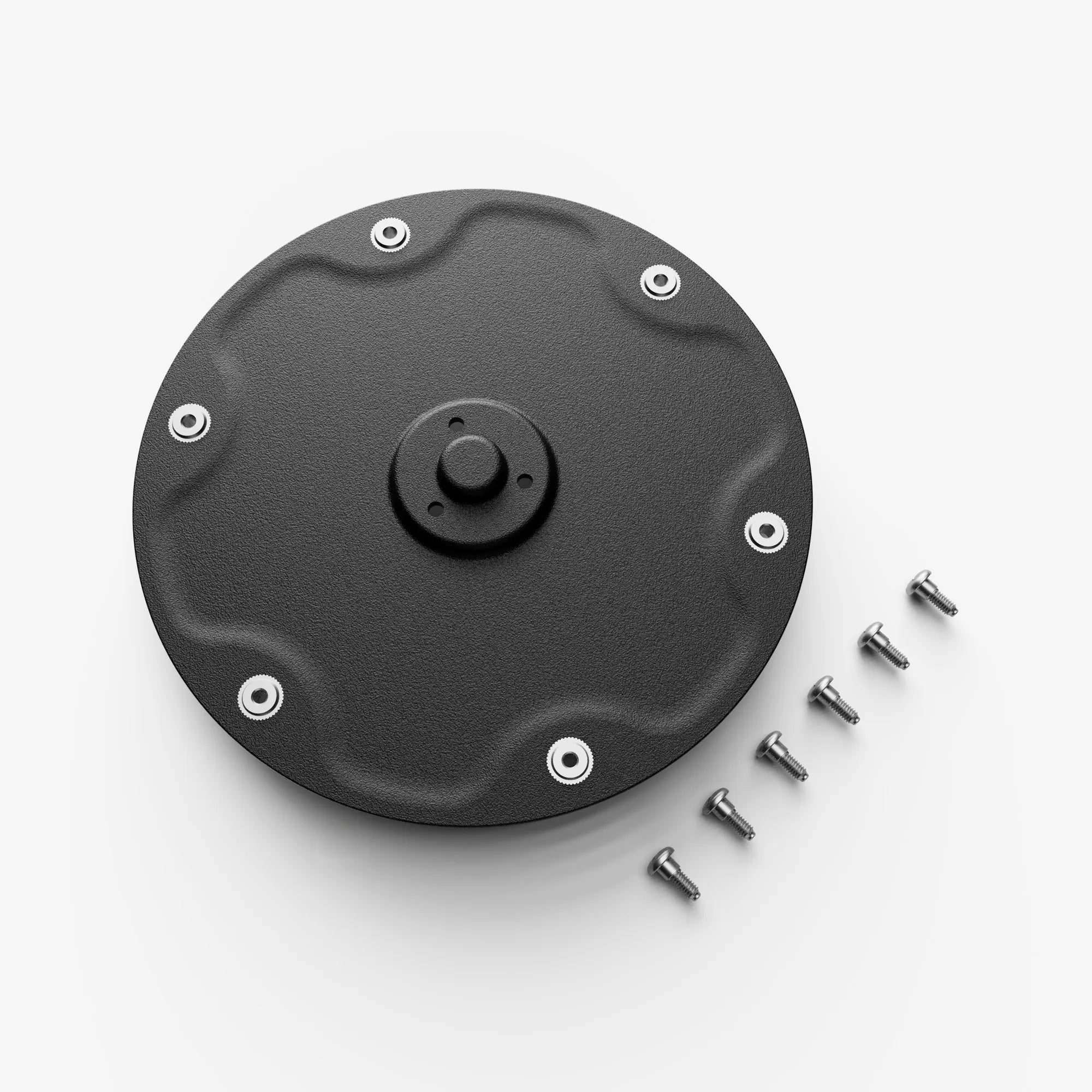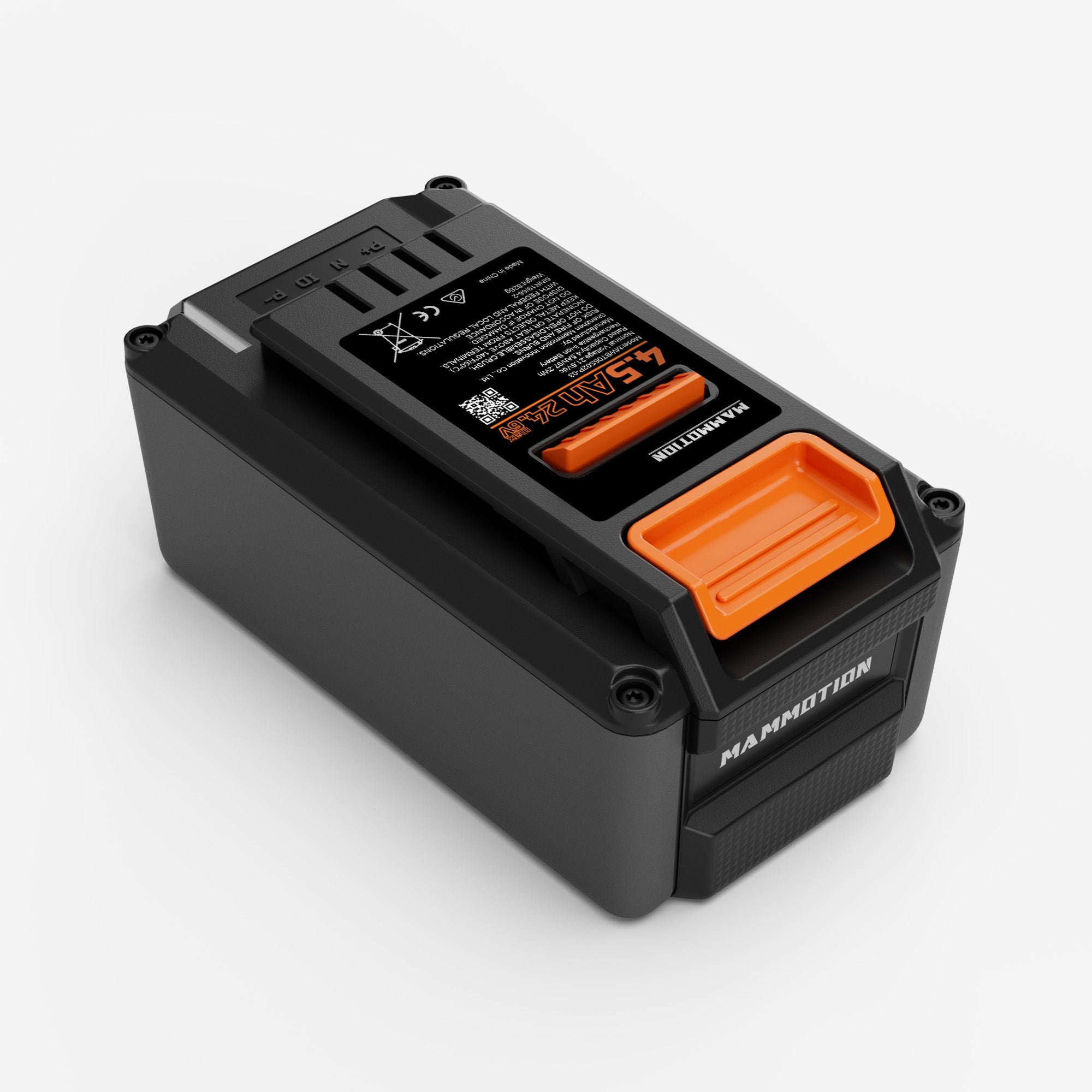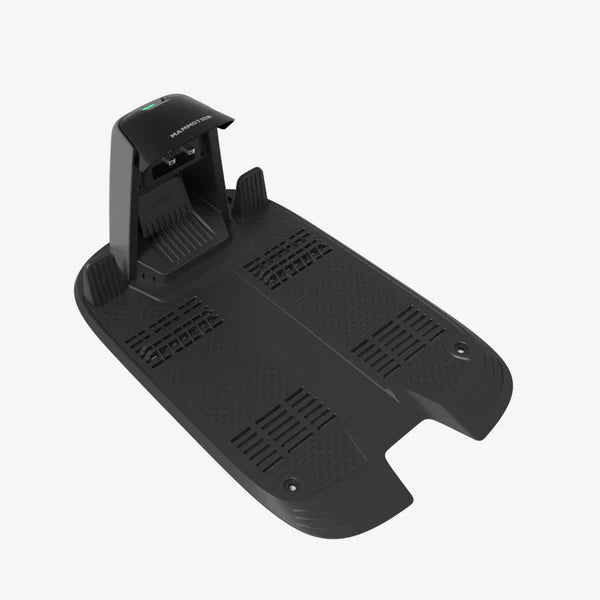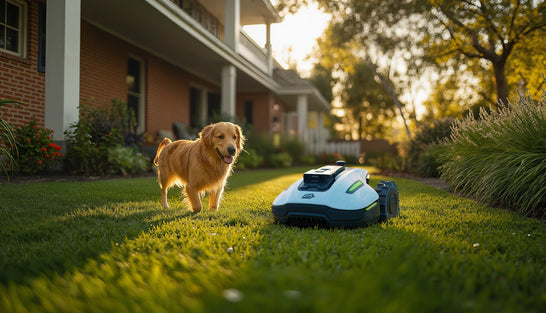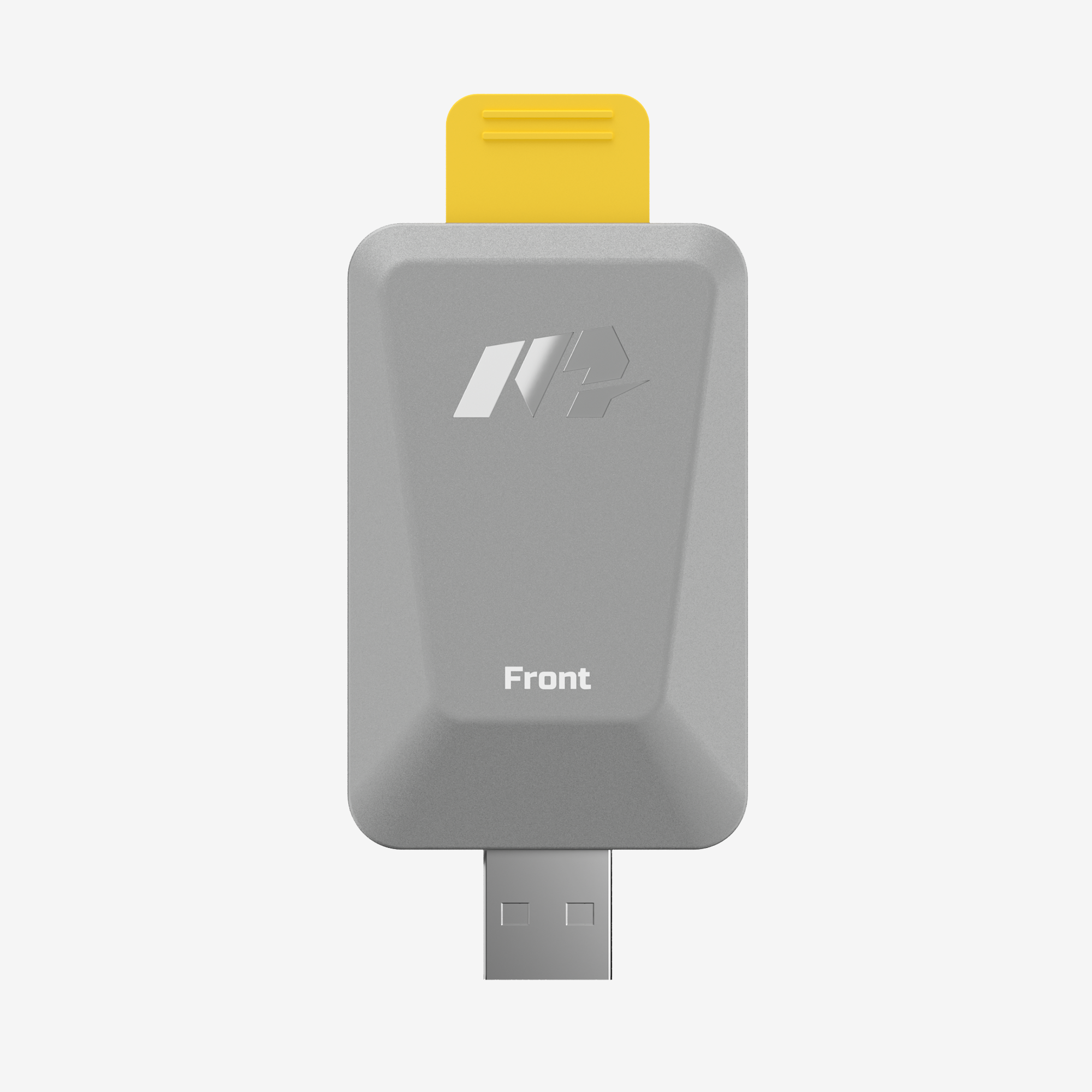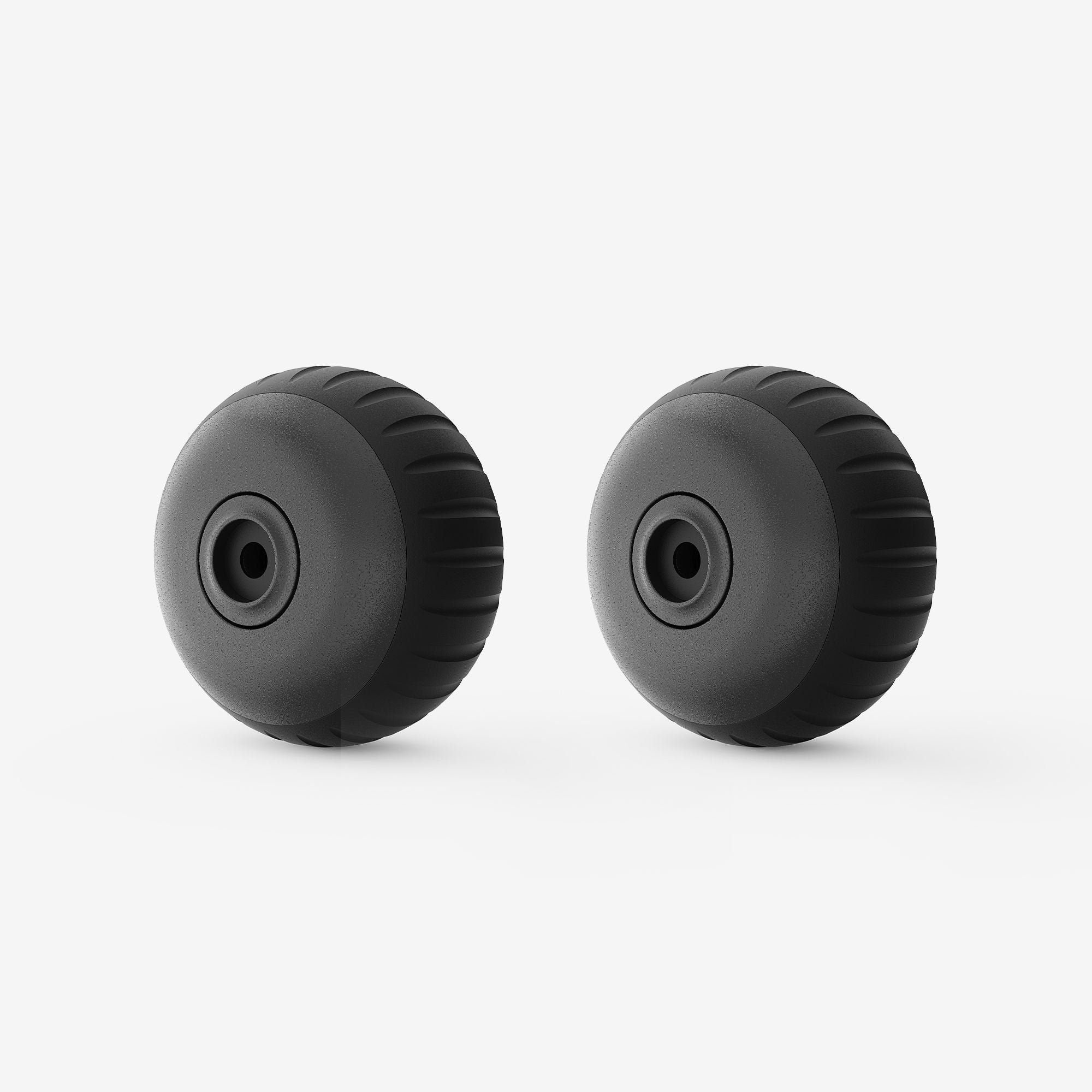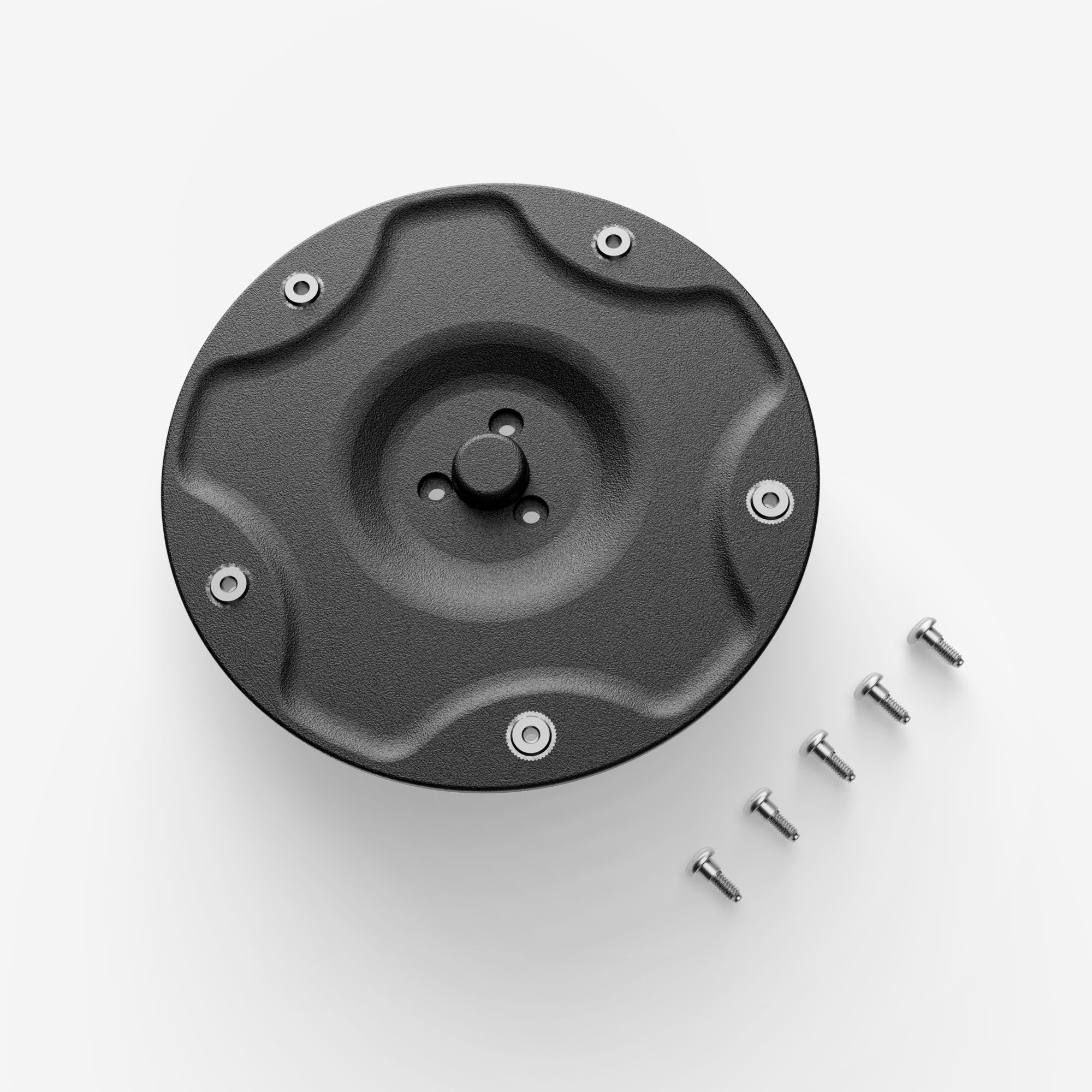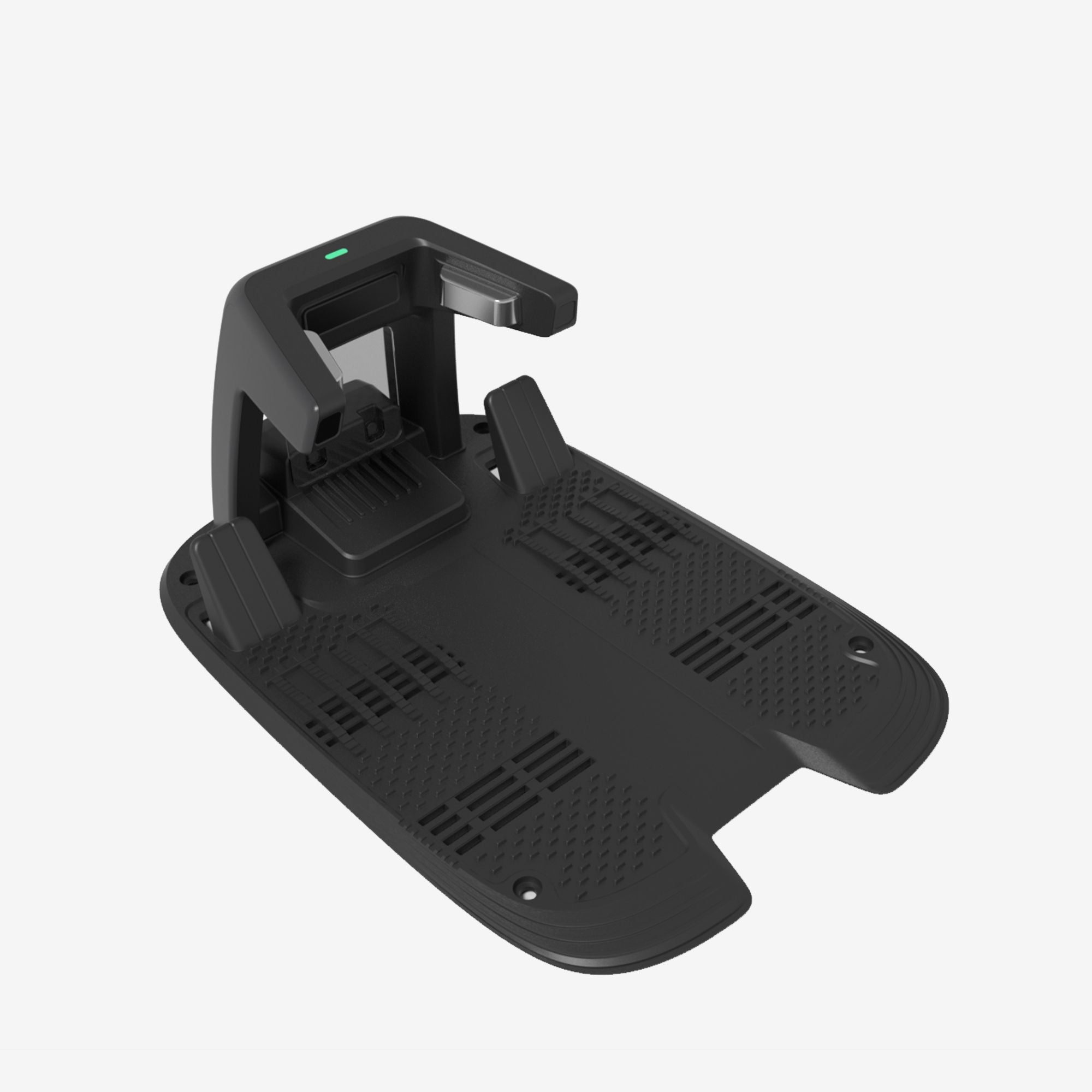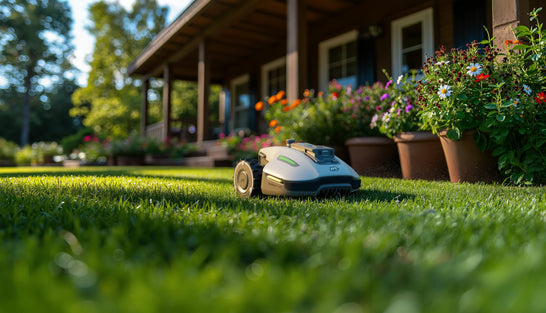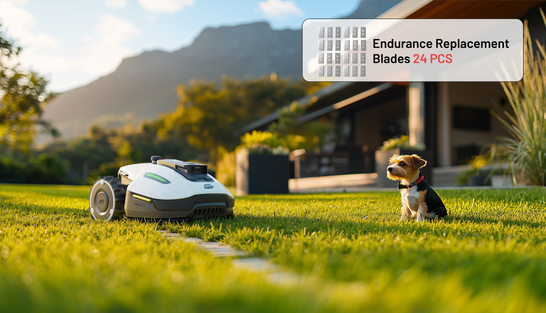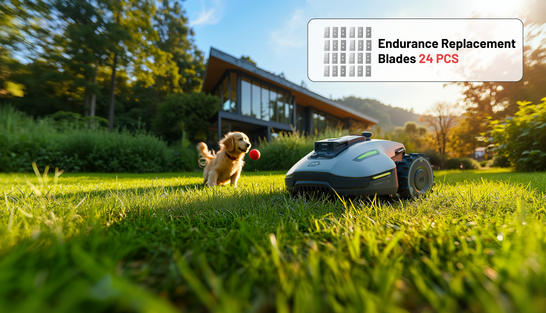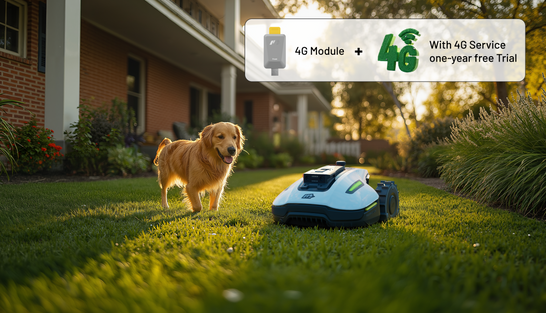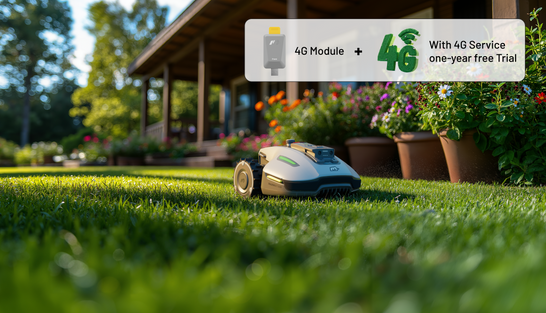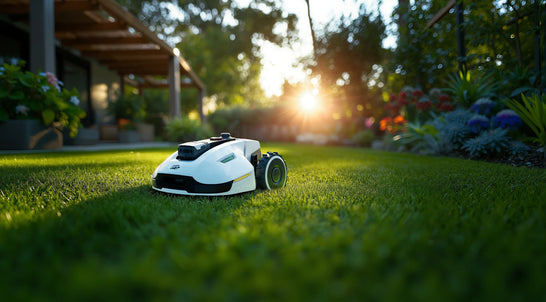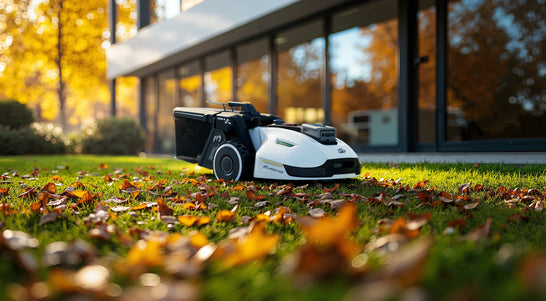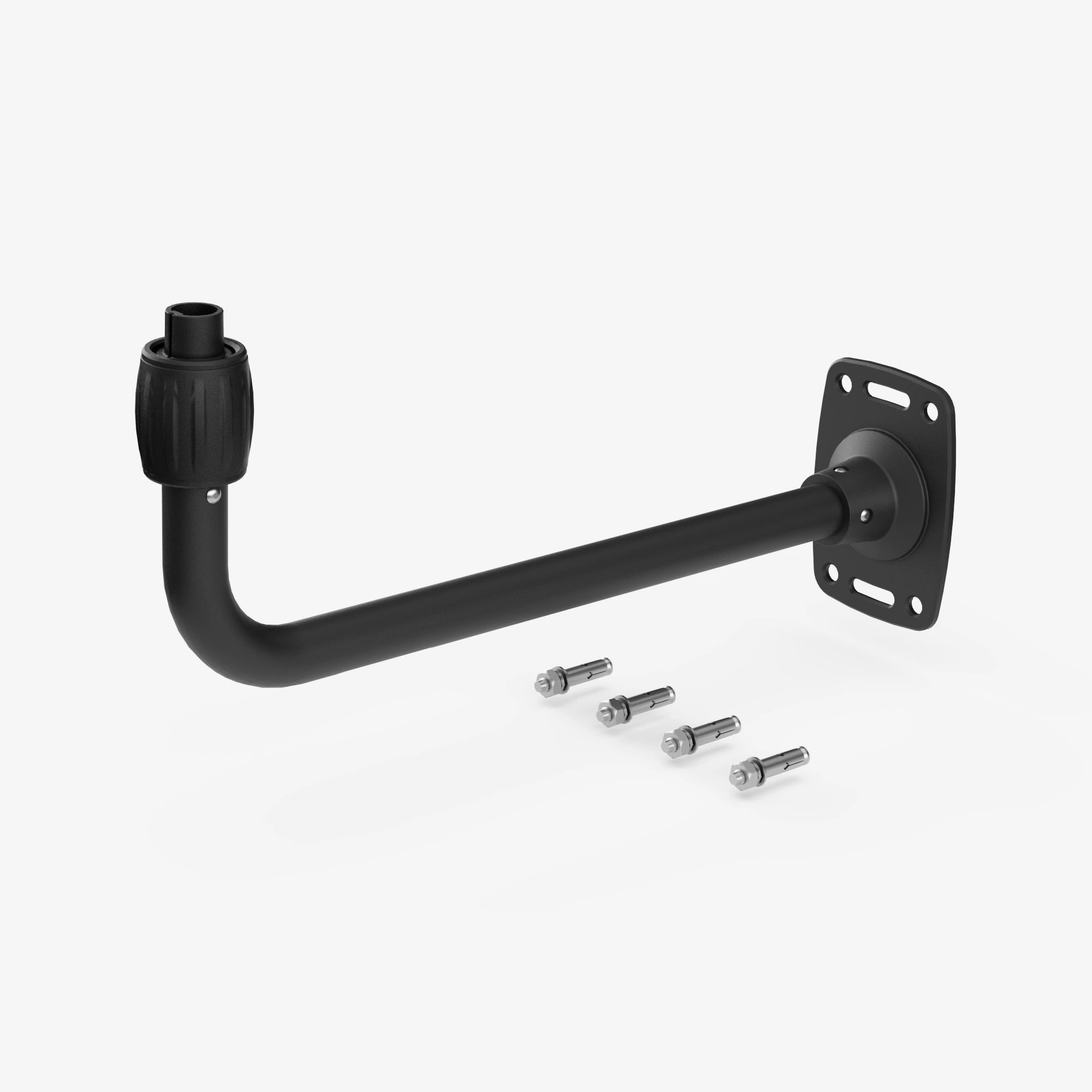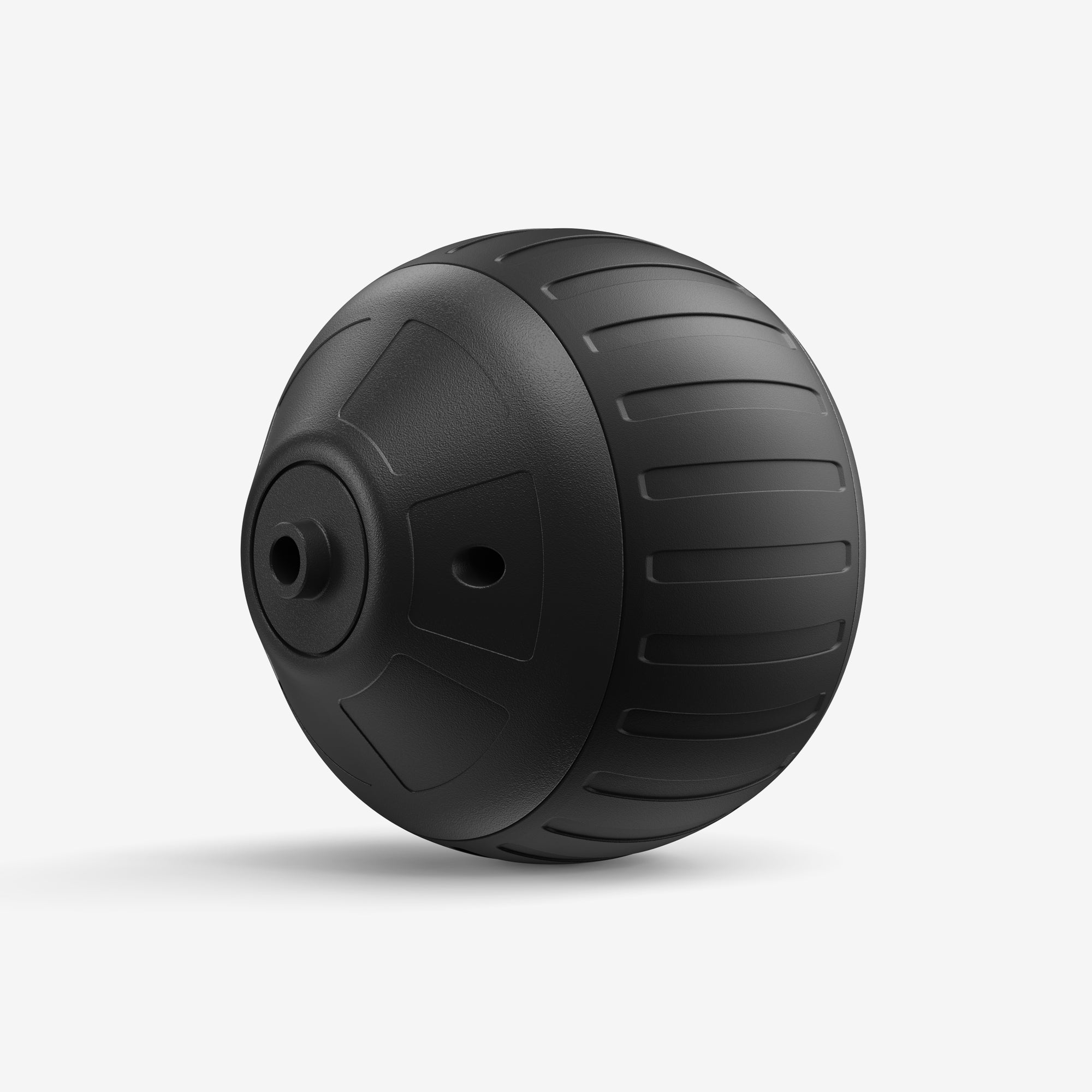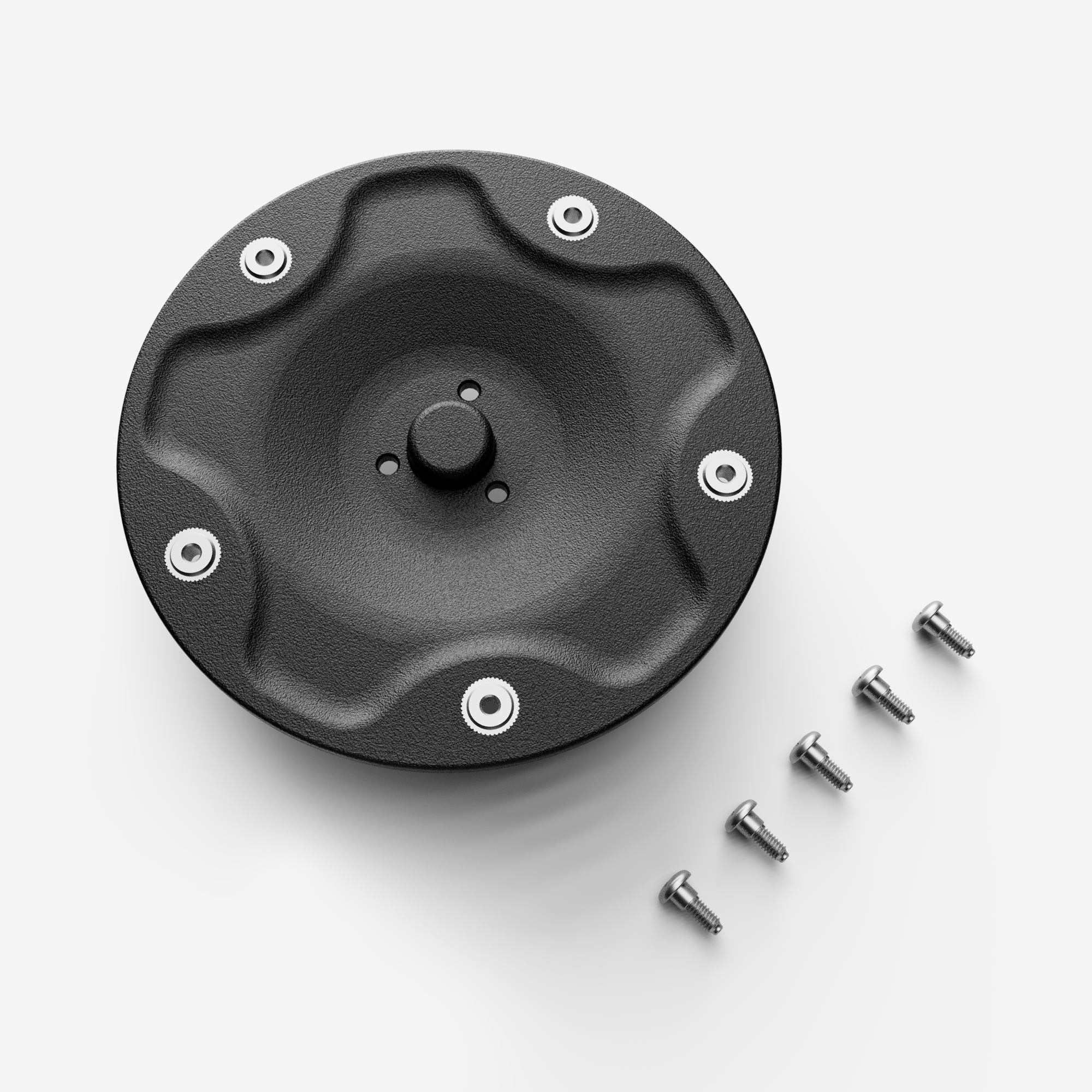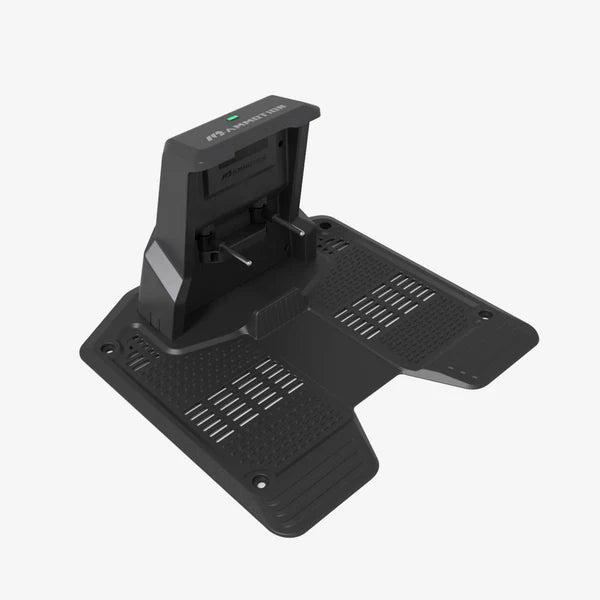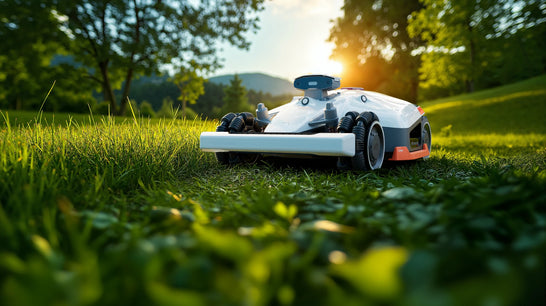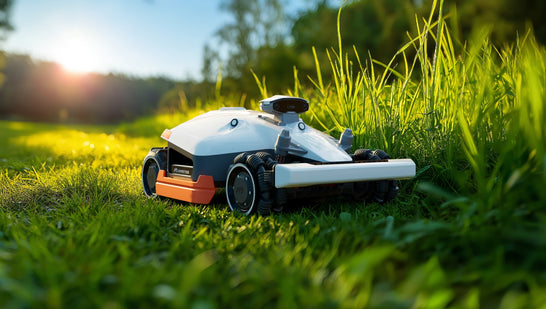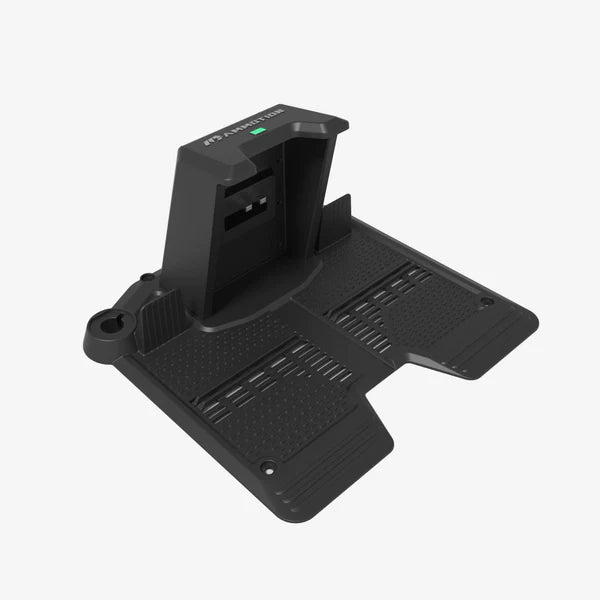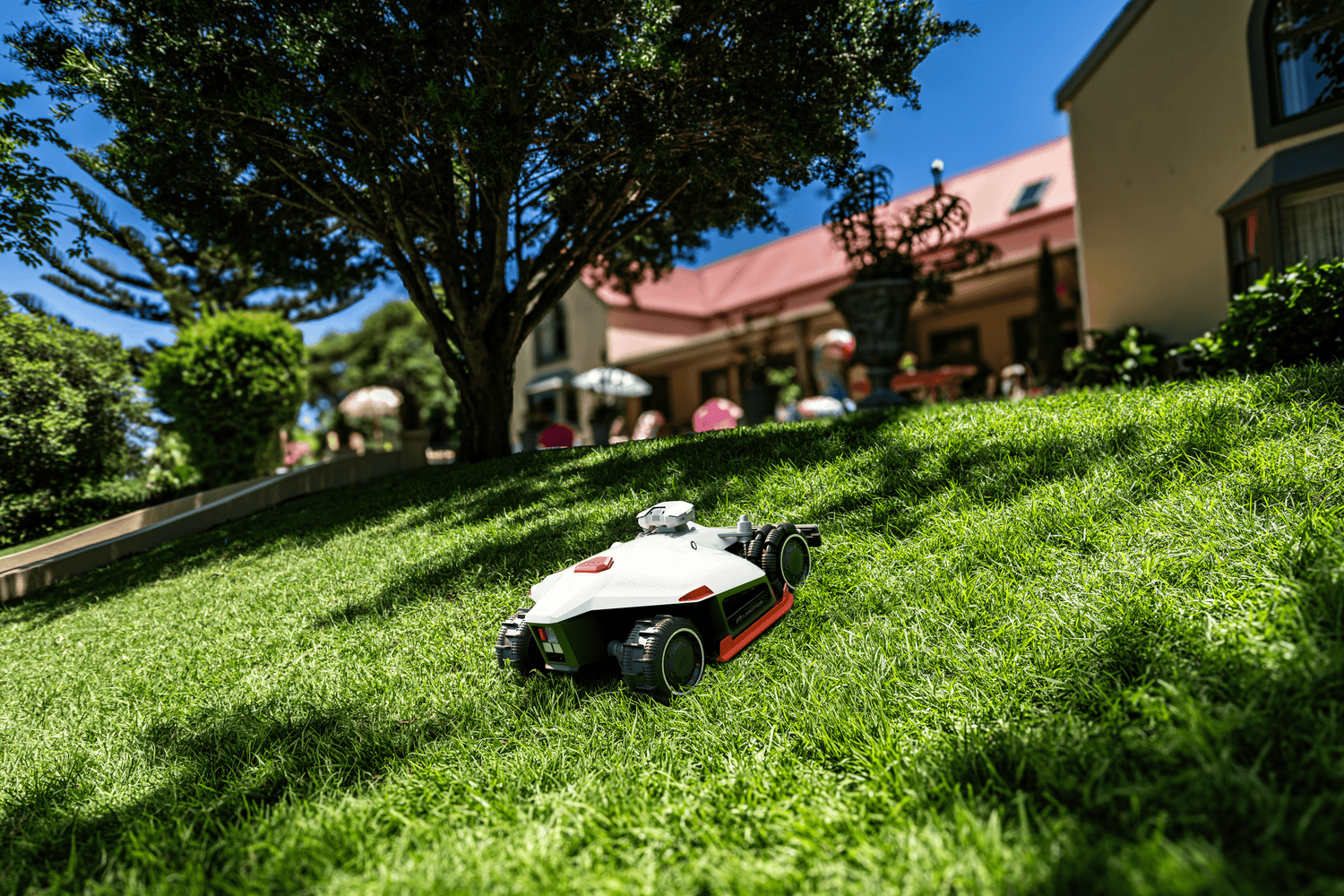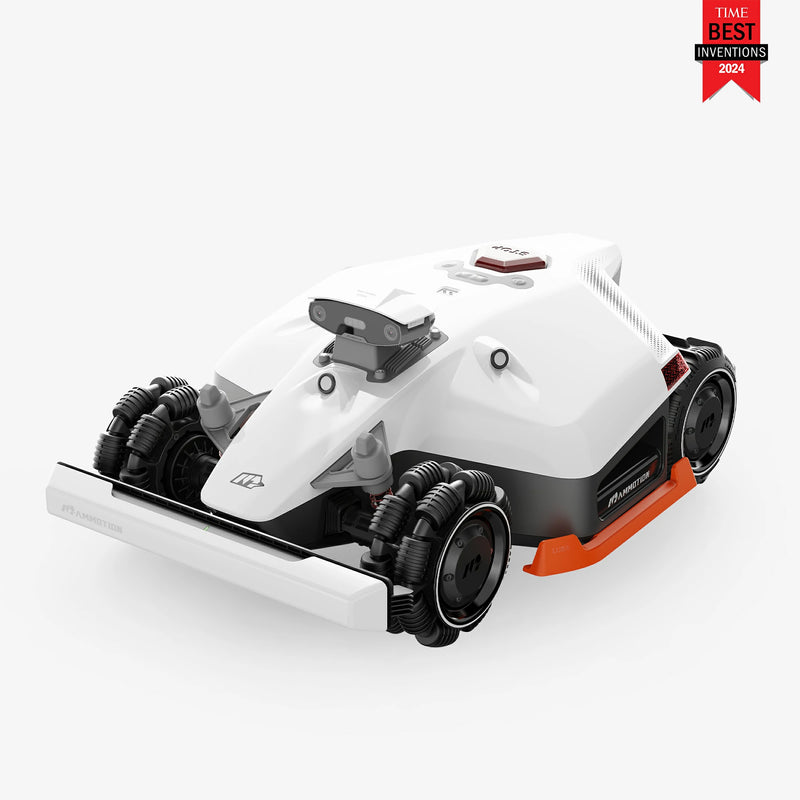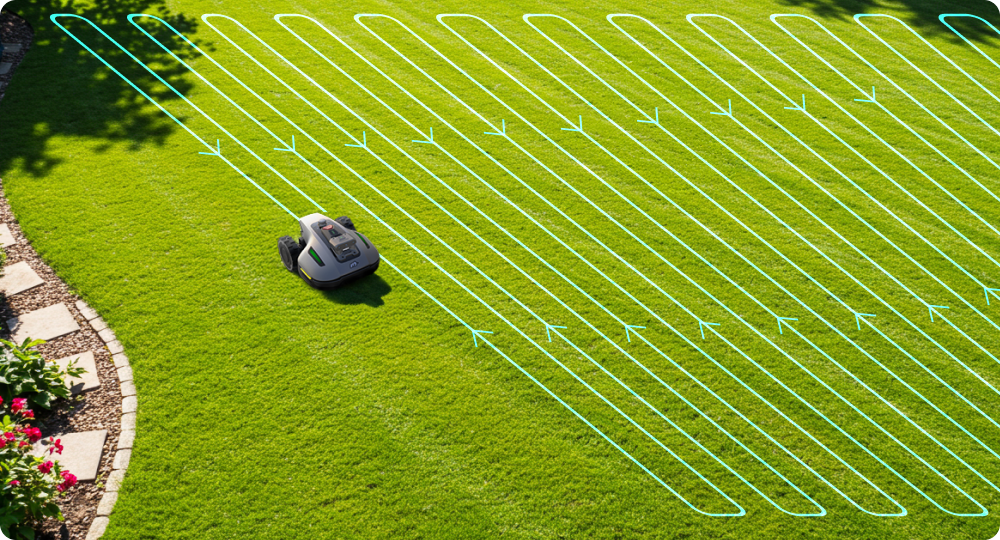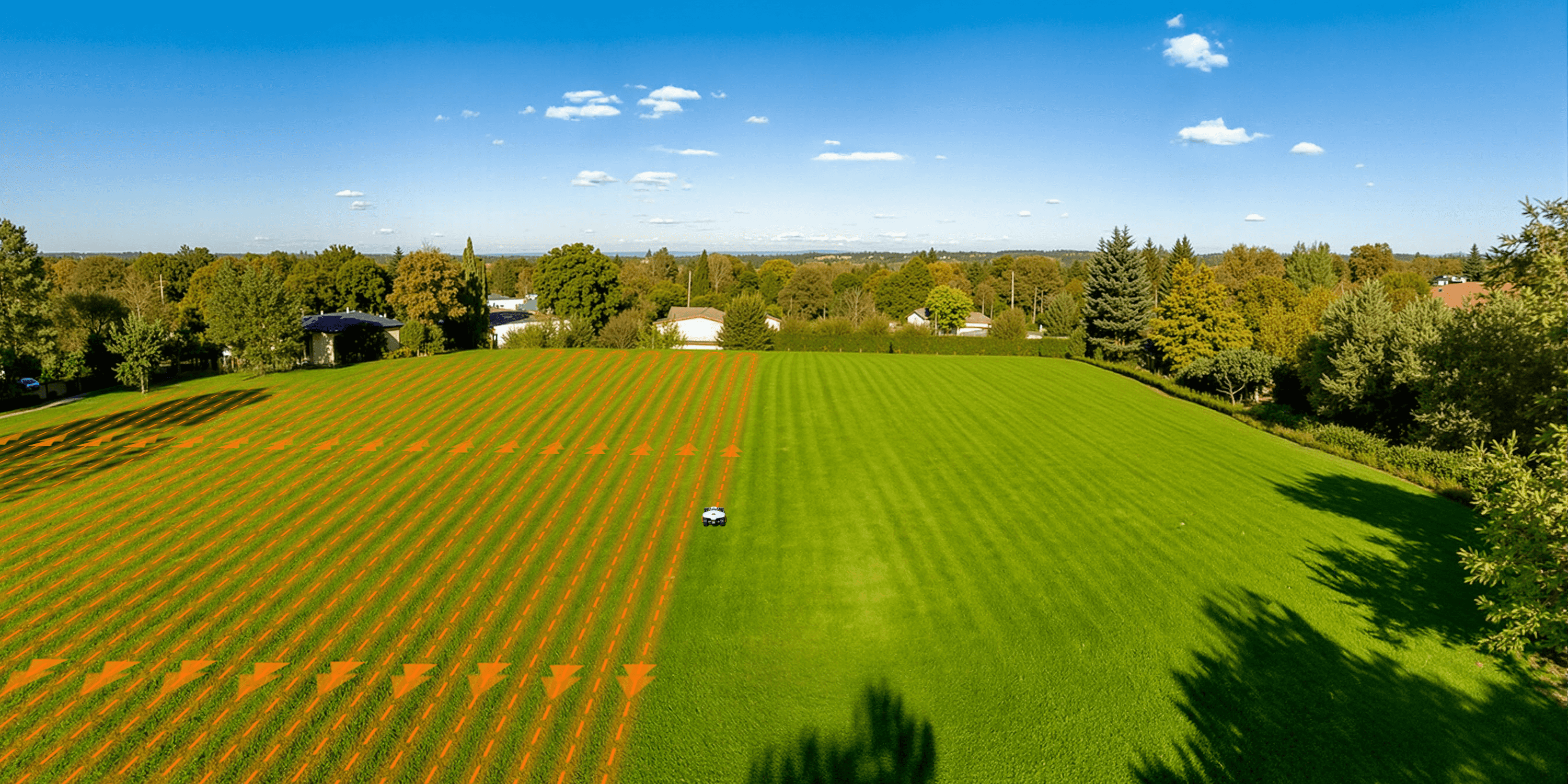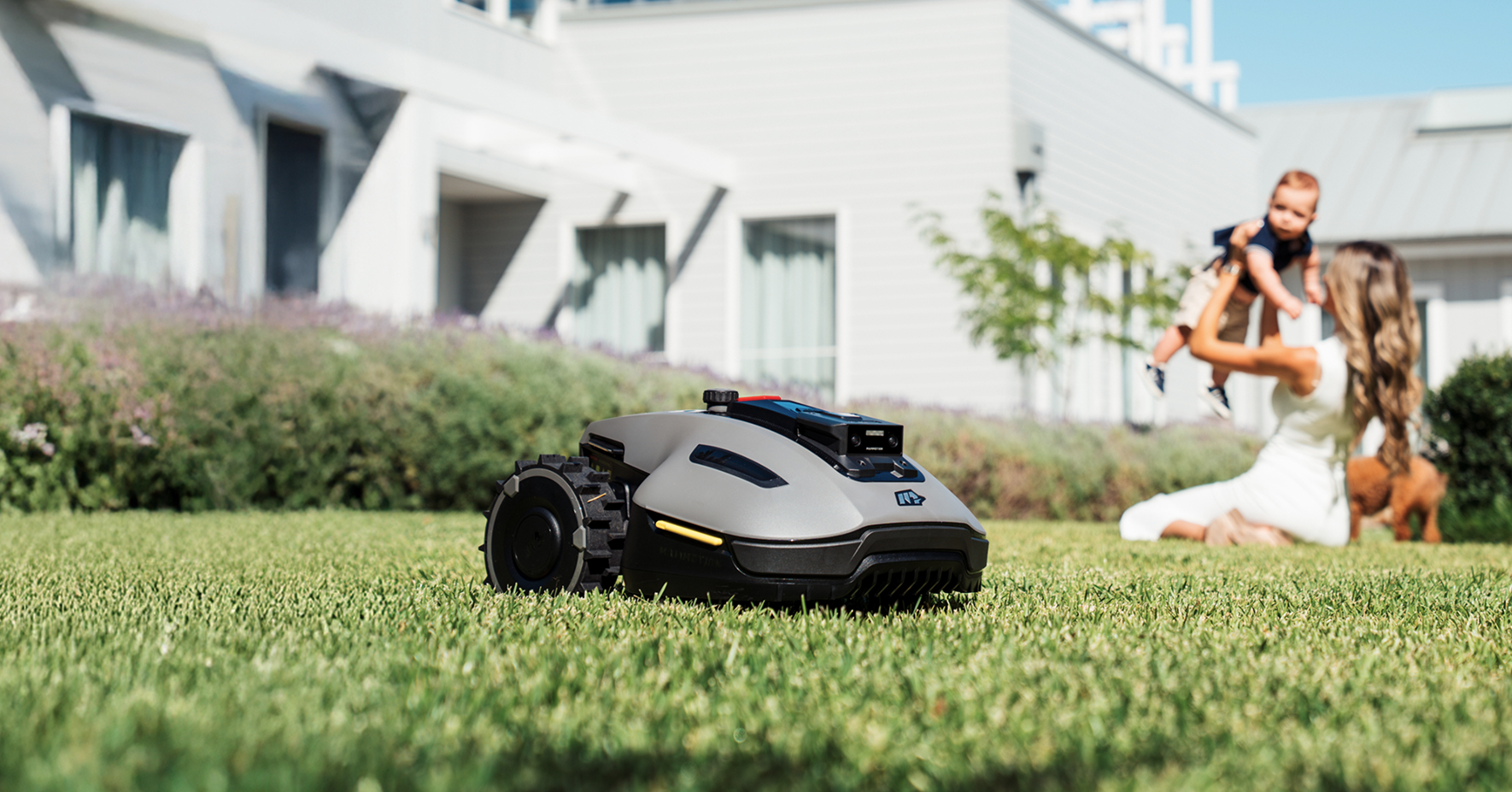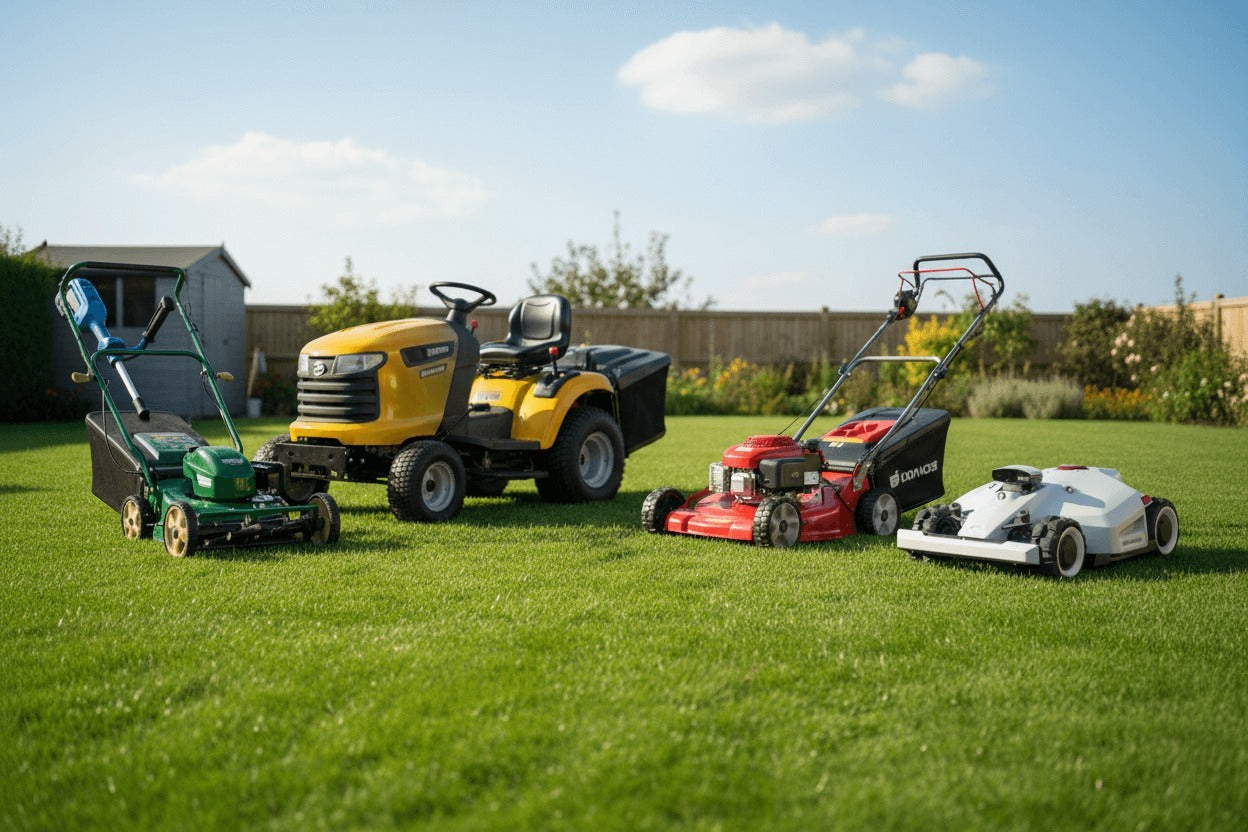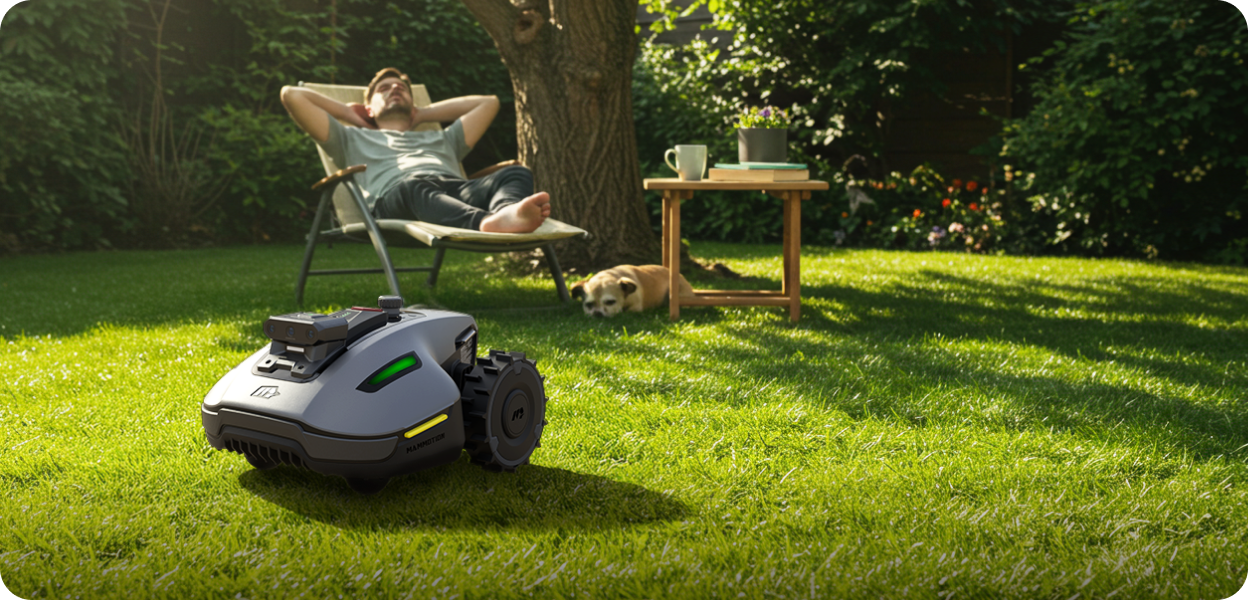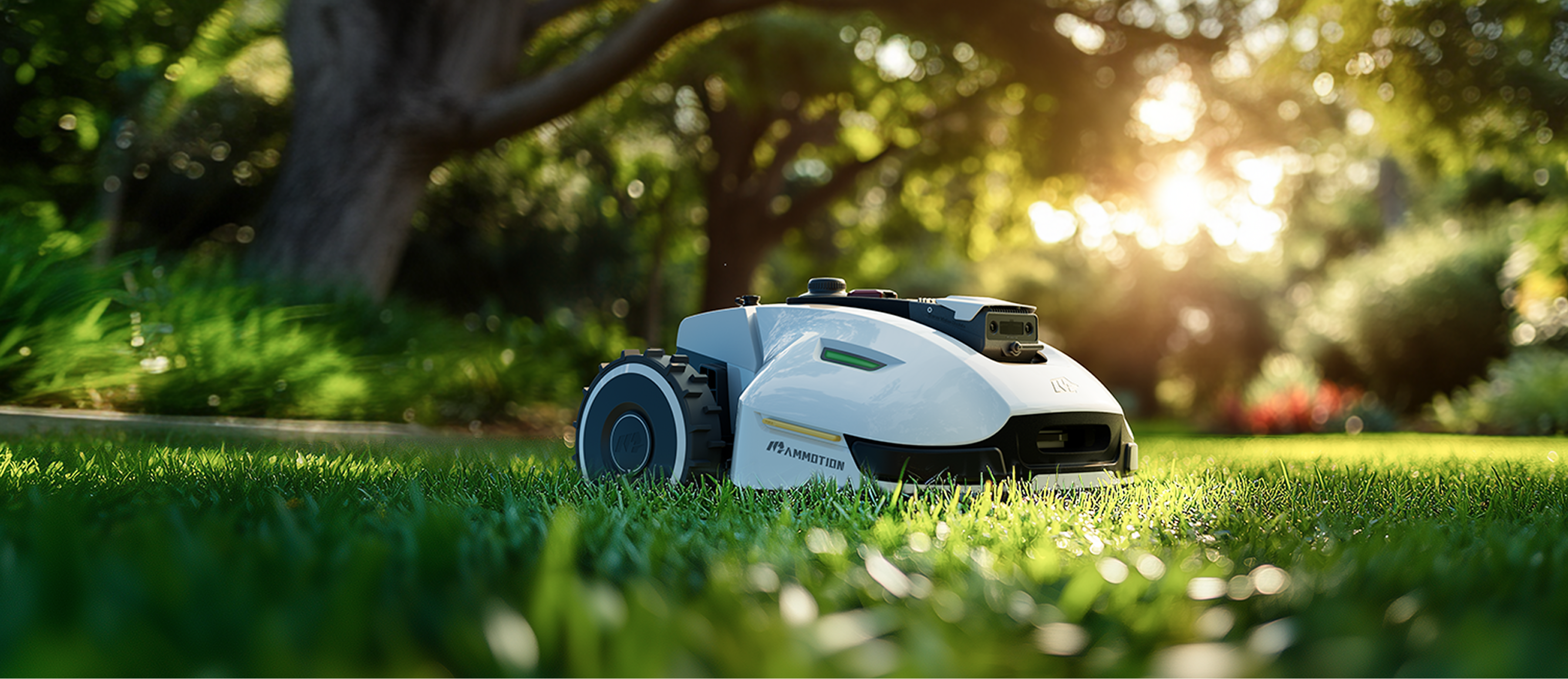Introduction: What is a GPS Robot Mower?
In recent years, robotic lawn mowers have gained significant popularity for their ability to autonomously take care of your lawn. But when it comes to precision and efficiency, a GPS robot lawn mower takes things to the next level. These advanced devices are equipped with GPS technology, allowing them to navigate your yard with unmatched accuracy. This innovative system ensures that your lawn is mowed evenly without the need for constant supervision.
So, what exactly is a GPS robot mower? It’s essentially an autonomous lawn care machine that uses GPS coordinates to create a map of your yard, helping it plan its mowing paths. By doing so, it can efficiently cover every inch of your lawn while avoiding obstacles and minimizing the risk of missing spots or overlapping areas. In contrast to standard robotic mowers that rely on boundary wires or simple sensors, GPS mowers provide a higher degree of precision, making them ideal for larger and more complex lawns.
If you still wondering how to choose a GPS robot lawn mower and if is there any machine we recommend, pls keep reading. In this guide, we will walk around all information about GPS robot lawn mowers and tell you how to choose and maintenance.
How Does a GPS Robot Lawn Mower Work?
A GPS robot mower functions by leveraging advanced GPS technology to navigate and map out your yard for efficient mowing. Unlike traditional robotic mowers, which rely on boundary wires or simple sensors, GPS mowers can create a virtual map of your entire lawn, allowing them to work autonomously and intelligently.
- Mapping and Navigation: Upon installation, the mower uses GPS coordinates to survey and map out the layout of your yard. It identifies the boundaries, obstacles, and any irregularities in the terrain. Some mowers come with advanced mapping systems that can store multiple maps, which is especially useful for large lawns or properties with multiple areas to mow.
- Path Planning and Precision: Once the map is created, the mower uses its GPS data to plan the most efficient mowing paths. This ensures that every inch of your lawn is covered with minimal overlap or missed spots. By calculating the best route, GPS mowers can navigate efficiently even in large or complex areas.
- Adaptive Terrain Handling: One of the key features of GPS robot mowers is their ability to adapt to varying terrains. Whether you have a hilly landscape or uneven ground, the mower’s GPS technology allows it to adjust its speed and mowing pattern accordingly. This flexibility ensures a consistent, high-quality cut, even on slopes or areas with more challenging terrain.
- Obstacle Avoidance: With the help of GPS and additional sensors, these mowers can detect obstacles such as trees, flower beds, and garden decorations. They can then either navigate around them or avoid them completely without requiring human intervention. In some cases, advanced models can even re-map the lawn if significant changes or new obstacles are detected.
- Smart Features and Integration: Many GPS robot mowers come equipped with smart features such as mobile app integration, weather sensors, and remote control options. Homeowners can use their smartphones to schedule mowing sessions, track the mower's progress, and adjust settings. Additionally, weather sensors allow the mower to pause or resume mowing depending on rain or other weather conditions, ensuring optimal lawn care.
Key Factors to Consider When Choosing the Best GPS Robot Lawn Mower
When selecting a GPS robot mower, there are several important features to keep in mind to ensure you get the best performance for your lawn. Here are the key factors to consider:
1. Lawn Size and Coverage Area
GPS robot mowers vary in their coverage capacity, with some designed for small yards and others capable of handling multiple acres. Check the manufacturer’s specifications to ensure the mower can handle the total square footage of your lawn. Some high-end models can manage lawns as large as 2.5 acres or more.
2. GPS Navigation and Mapping Accuracy
Not all GPS mowers are created equal—some use Real-Time Kinematic (RTK) GPS for highly accurate positioning, while others rely on standard GPS combined with other navigation technologies. Look for a model that offers precise mapping and efficient route planning to minimize redundant mowing paths.
3. Battery Life and Charging Time
A larger lawn requires a mower with a long battery life. Consider a mower that can run for at least 2-3 hours per charge. Additionally, check the automatic recharging capability—many models will return to their charging station when the battery runs low and resume mowing where they left off.
4. Cutting Width and Height Adjustment
The cutting width determines how much grass the mower trims in one pass. A wider cutting width means fewer passes and a shorter mowing time. Adjustable cutting heights are also important for different grass types and seasonal changes.
5. Terrain and Slope Handling
If your lawn has hills, uneven ground, or obstacles, you need a mower with strong traction, all-wheel drive (AWD), and the ability to handle slopes up to 45%. Some advanced models can intelligently adjust their speed and cutting height based on the terrain.

6. Smart Features and App Control
Many GPS robot mowers come with Wi-Fi or Bluetooth connectivity and a mobile app for remote control. Features to look for include:
✔ Zone management – Allows you to create no-go areas or focus on specific sections of your lawn.
✔ Rain sensors – Pauses mowing during rain to avoid damaging wet grass.
✔ Voice assistant integration – Compatible with Alexa or Google Assistant for hands-free operation.
7. Security and Anti-Theft Features
Because robotic mowers are a significant investment, anti-theft features such as PIN codes, GPS tracking, and alarm systems are essential. Some models will even send an alert to your phone if the mower is moved outside its designated area.
8. Maintenance and Durability
Consider how easy it is to clean and maintain the mower. Models with washable decks, self-cleaning blades, and removable batteries can simplify long-term upkeep.
Top GPS Robot Lawn Mowers in the Market
In 2025, several GPS-enabled robotic lawn mowers stand out for their advanced features and performance. Below are detailed overviews of three leading models:
Mammotion LUBA 2 AWD
The Mammotion LUBA 2 AWD is designed for expansive lawns, offering a range of models suitable for areas up to 2.5 acres. Equipped with all-wheel drive, it adeptly handles slopes up to 80% (approximately 38.6 degrees). Its UltraSense AI Vision system enables precise navigation and obstacle avoidance without the need for perimeter wires.
Key Features:
Coverage Area: Models available for 0.75, 1.25, and 2.5 acres.
Cutting System: Dual cutting discs with six pivoting razor blades each, providing a 15.7-inch cutting width.
Cutting Height: Adjustable from 2.2 to 4.0 inches.
Navigation: UltraSense AI Vision combined with RTK for precise mapping and efficient mowing paths.
Terrain Handling: All-wheel drive allows for effective operation on slopes up to 80%.
Smart Features: App control for scheduling, mowing height adjustments, and multi-zone management; integrates with Alexa and Google Home.
Pros:
- High-precision navigation without perimeter wires.
- Excellent slope handling capability.
- User-friendly app with comprehensive control options.
Cons:
- Premium pricing, with the 2.5-acre model priced at $4,399.
- Large physical footprint may not be suitable for smaller lawns.
Price: Starting at $2,499 for the 0.75-acre model; $4,399 for the 2.5-acre model.
Husqvarna Automower 450X
The Husqvarna Automower 450X is engineered for complex terrains and large lawns, efficiently managing areas up to 1.25 acres. Its all-wheel-drive system enables it to handle slopes up to 45%. Equipped with GPS-assisted navigation, it ensures thorough lawn coverage.
Key Features:
Coverage Area: Up to 1.25 acres.
Cutting System: Three pivoting razor blades with a 9.45-inch cutting width.
Cutting Height: Adjustable from 0.8 to 2.4 inches.
Navigation: GPS-assisted navigation for systematic mowing patterns.
Terrain Handling: All-wheel drive manages slopes up to 45%.
Smart Features: Weather timer adjusts mowing based on grass growth; app control for scheduling and settings adjustments.
Pros:
- Reliable performance on complex terrains.
- Efficient GPS-assisted navigation.
- Robust build quality.
Cons:
- Higher price point compared to some competitors.
- Limited cutting height range.
Price: Approximately $3,299.
Segway Navimow X3
The Segway Navimow X3 offers a wire-free installation and fully automated lawn care for areas ranging from 0.5 to 2.5 acres. Its precise GPS navigation system ensures accurate mowing without the need for boundary wires.
Key Features:
Coverage Area: Models suitable for 0.5 to 2.5 acres.
Cutting System: Four-blade cutting system with adjustable cutting heights.
Navigation: High-precision GPS navigation for efficient mowing paths.
Terrain Handling: Capable of handling moderate slopes and uneven terrains.
Smart Features: App control for scheduling, real-time tracking, and settings customization; virtual boundary setting without physical wires.
Pros:
- Wire-free installation simplifies setup.
- Accurate GPS navigation ensures thorough coverage.
- User-friendly app enhances control and customization.
Cons:
- Limited availability in certain regions.
- Higher initial cost compared to traditional mowers.
Price: Varies by model and region; check with local retailers for current pricing.
Advantages of Using a GPS Robot Lawn Mower
GPS-enabled robotic lawn mowers offer numerous benefits compared to traditional mowers and even non-GPS robotic models. Here are some of the key advantages:
1. Precision Navigation for Efficient Mowing
GPS-guided robotic mowers use advanced mapping technology to create an efficient mowing pattern, reducing redundant passes and ensuring complete lawn coverage. Unlike traditional boundary-wire mowers, GPS models minimize missed spots and prevent over-mowing, leading to a healthier lawn.
2. No Need for Boundary Wires
Many high-end GPS robot mowers, such as the Mammotion LUBA 2 AWD and Segway Navimow X3, eliminate the need for physical boundary wires. Instead, they use RTK (Real-Time Kinematic) positioning to define virtual boundaries, simplifying setup and reducing installation time.
3. Time and Effort Savings
Once set up, GPS robot mowers operate autonomously, handling lawn maintenance without manual intervention. With app-based scheduling and real-time monitoring, homeowners can manage their mower remotely, freeing up time for other tasks.
4. Adaptive Mowing Based on Lawn Growth
Some GPS mowers, feature weather-based mowing schedules. These smart mowers adjust their cutting frequency depending on grass growth, ensuring optimal lawn health while preventing unnecessary wear on the mower.
5. Better Coverage for Large and Complex Lawns
For homeowners with large or irregularly shaped lawns, GPS mowers provide superior coverage compared to traditional robotic models. Features like multi-zone management and slope adaptability allow them to handle expansive and challenging terrains effectively.
6. Real-Time Tracking and Anti-Theft Features
GPS-enabled robotic mowers come with built-in tracking features that allow users to locate their mower at any time via a mobile app. Some models include security alerts and geofencing, deterring theft and increasing peace of mind.
7. Environmentally Friendly Operation
Since GPS robotic mowers are electric-powered, they produce zero direct emissions and operate quietly compared to gas-powered alternatives. Their continuous, small-scale cutting technique also promotes healthier grass growth by leaving fine clippings as natural mulch.
Maintenance and Usage Tips for GPS Robot Lawn Mowers
To ensure your GPS robotic mower operates efficiently and lasts for years, proper maintenance and correct usage are essential. Here are some key tips:
1. Regular Cleaning and Blade Maintenance
Remove grass clippings and debris from the mower’s body, wheels, and cutting deck after each use.
Clean the sensors and GPS module to maintain accurate navigation.
Replace or sharpen blades regularly to ensure a clean and even cut.
2. Battery Care and Charging Best Practices
Follow the manufacturer’s recommendations for charging cycles to extend battery life.
Keep the charging station in a shaded, dry location to prevent overheating.
Avoid running the mower until the battery is completely drained—regular charging helps maintain battery health.
3. Software Updates and Connectivity Checks
Periodically update the mower’s firmware to improve navigation, performance, and security features.
Ensure a stable GPS connection and check for any interference from tall structures or dense trees.
If your mower uses an RTK base station, position it in an open area for optimal signal reception.
4. Seasonal Adjustments and Storage
In fall and winter, adjust mowing frequency based on grass growth rates.
Before storing the mower for winter, clean it thoroughly, remove the battery if necessary, and store it in a dry, temperature-controlled space.
If you live in an area with snow or heavy rain, protect the charging station from extreme weather conditions.
5. Troubleshooting Common Issues
If the mower struggles with navigation, check for obstacles that may be blocking GPS signals.
If cutting performance declines, inspect the blades and adjust the cutting height as needed.
For connectivity issues, ensure the mower is within range of Wi-Fi, Bluetooth, or cellular signals, depending on the model.
Conclusion: Is a GPS Robot Lawn Mower Worth It?
GPS robot lawn mowers have transformed lawn care by providing precision, efficiency, and convenience. With advanced navigation, automatic operation, and smart features, they are an excellent choice for homeowners looking to maintain their lawns with minimal effort.
If you have a large lawn, complex terrain, or value automation, a GPS-guided mower is a worthwhile investment. While the upfront cost is higher than traditional mowers, the long-term benefits—time savings, reduced labor, and lower maintenance—make them a smart investment.
If you're ready to upgrade your lawn care routine, explore our top GPS robot mower recommendations and find the best fit for your yard today!

